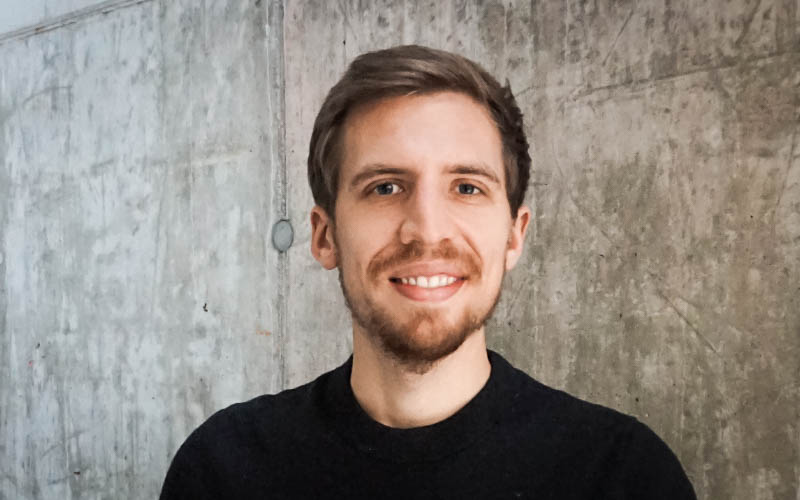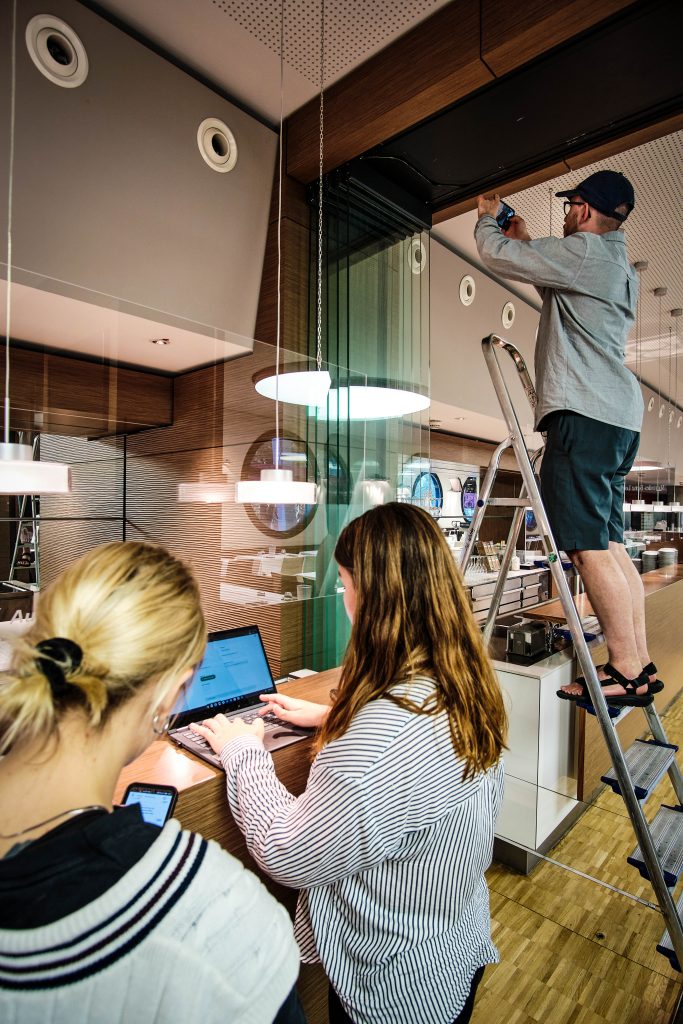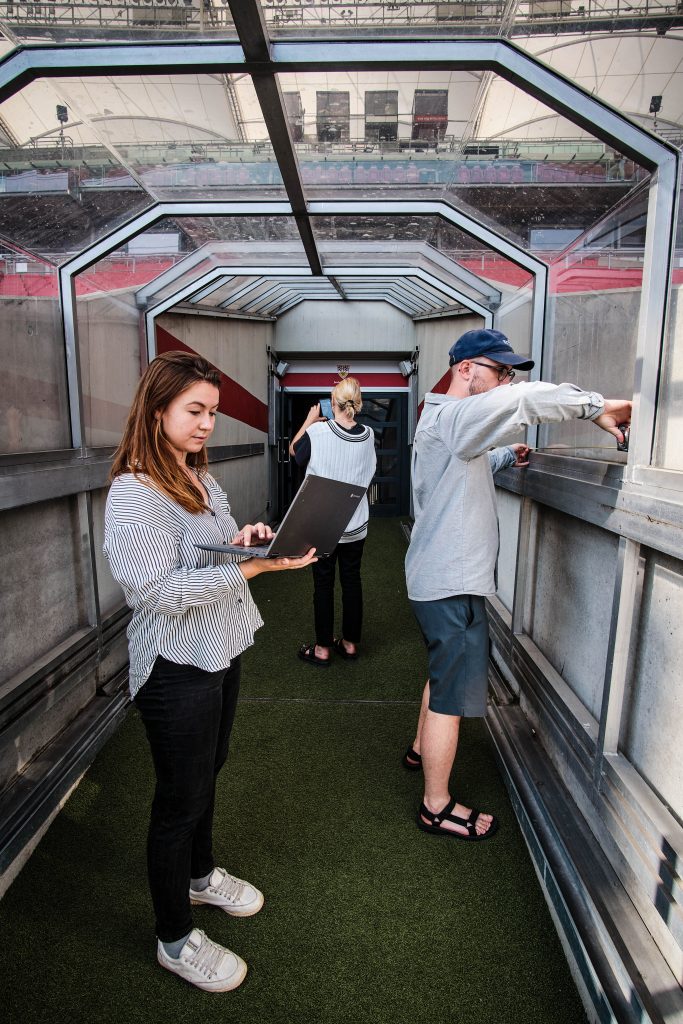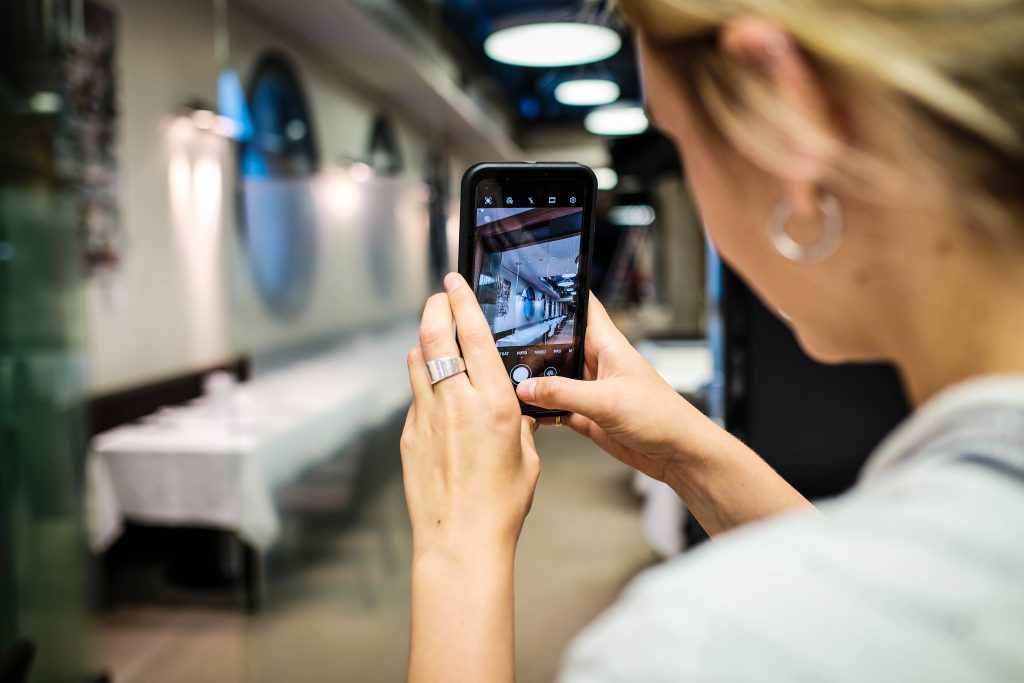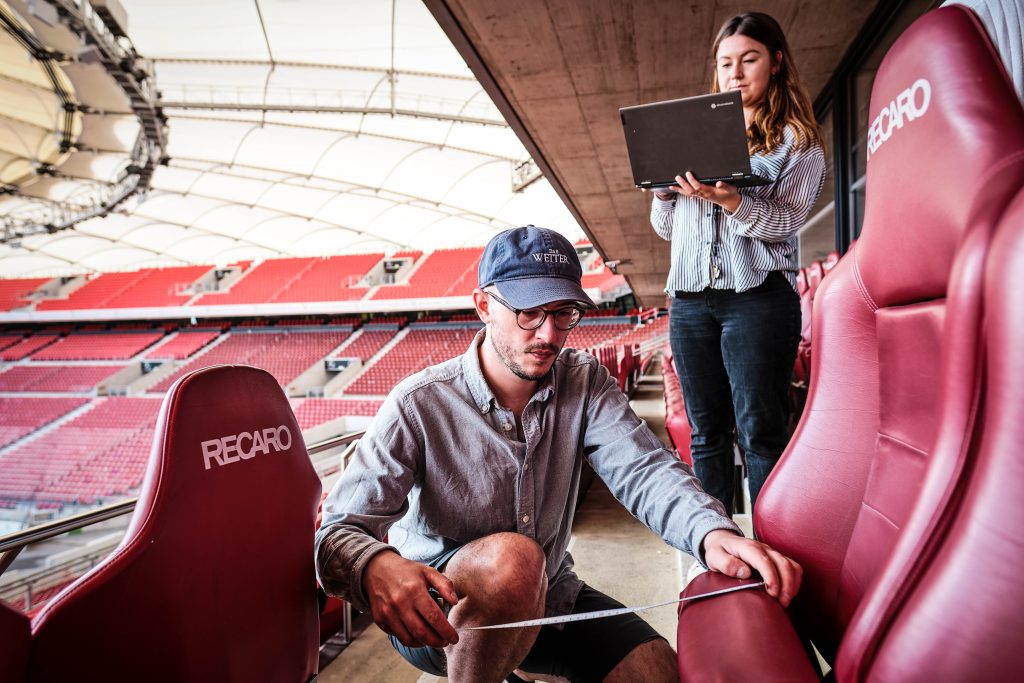Digitisation of the construction sector is an important step. It will simplify and streamline material reuse and carbon emission reduction. But this takes brains, cooperation between computing and construction, and a personal determination to create a circular economy regardless of how hard the journey gets. That’s Dominik Campanella down to a ‘T’, and here he tells us how data and discarded material fit so well together, and why CityChangers looking to launch their own start-ups should attend Urban Future.
Great things can happen by accident. Dominik Campanella already knew designer Julius Schäufele when Marc Haines – an architect who they met through a mutual acquaintance – proposed an ingenious idea: an online marketplace for reusable construction materials. This formidable team co-founded Restado in 2014.
Studying Computer Sciences and having held management-level positions at Google in multiple countries, Dominik’s skills were ideal for programming the platform and running the fledgling business. This digital hub for trading leftover and deconstructed building materials has become “the largest marketplace in Europe of its kind,” Dominik tells us. Propelling his vision was a thirst to make a difference where it counts.
Construction and Climate Change
“The construction sector is the largest polluter in the world.” Dominik recalls that it produces “60% of all waste and 40% of greenhouse gas emissions”. Half of these GHGs, he claims, are attributable to embodied carbon; the CO2 spilling out during extracting, processing, distributing, and building with various materials such as concrete and steel. To add insult to injury, roughly 15% isn’t even used!
Unwanted, leftover, demolished, and damaged materials typically end up in one place: landfill. Unsurprisingly, the sector isn’t hitting its carbon reduction targets.
Through Restado, Dominik disrupted this wasteful linear process, making perfectly decent construction goods available again throughout Germany.
For the industry, the attraction was second-hand pricing. Materials can be snapped up at a fraction of the trade cost. Others could recoup some of their budget by selling what they didn’t use. It gives deconstruction and reprocessing companies, and those who recover and trade historical building materials, a platform to professionally offer their products. Talk about filling a gap in the market!
But there was a drawback: “With Restado, we mainly target and reach private DIY projects and craftspeople.” That’s important, but significantly depleting carbon needs the bigger actors on board. One company could work on a development that’s equivalent to a thousand ‘hobby’ projects.
“We saw that the impact would really happen if we were able to reach the professionals, the large stakeholders of the construction sector.”
What’s In a Building?
Up to 2020 BC (before Concular), we measured a building’s operational GHG emissions. We got really good at learning how energy inefficient, draughty, and power-hungry our homes, shops, offices, and public places are. But, says Dominik, “we never measured how much CO2 was actually put in or polluted when we built it”. Then, he notes, we tear it down after a relatively short time – like 20 years – dumping the debris which would have sustained 100 or 200 years of wear and tear. Then we rebuild something similar with new raw materials in its place. Dominik’s exasperation is understandable: “It’s total nonsense!”
But now there’s an answer. Concular is Germany’s digital ecosystem for circular construction.
Going Circular with Concular
Dominik and co. realised that we just didn’t understand the materials in a building. By the time it’s deconstructed, he explains, it’s too late to determine the details. The ingredients are lost!
Flip the scenario. If we know what components are present, we can tell others up to months before a building is demolished and have a buyer standing by. “We’re able to get these materials back into the loop.”
This is the Concular principle. “We digitise materials and buildings, and then it is put on our platform. Manufacturers, recycling companies, refurbishment companies and so on, they all have access to our platform, and they get contacted when there are materials which they’re looking for.”

Assessing building components. Image credit: Concular 
Entering material evaluation on Concular. Image credit: Thomas Jones
Behind the software is state-of-the-art research. Concular works closely with European universities to develop product lifecycle methodologies that automatically calculate the CO2 emissions (and savings) for each ‘product’, including transportation. This then shows how far items can be carried. “For example, concrete, it’s only 100 kilometres. But there are some materials, steel and so on, where you can transport them all around Germany and still save more CO2 compared to what you would have done otherwise.”
Why Reuse?
We could knock down buildings and crush or melt the materials for recycling, but this uses a lot of energy and often results in poor-quality resources. Downcycling steel, for example, could produce a substance suitable for a drink can, but not for reinforced girders. In contrast, Dominik tells us, reuse “can save 98% of CO2” at its optimum. On average, it’s 70%.
This is why Concular promotes the reuse of whole units, such as walls, steel rods, gypsum boards, wooden beams, etc. Removing them from a site to reuse elsewhere is a lot less energy-intensive and makes strides towards carbon targets.
There are further benefits, which Dominik shares:
- Digitising the entire construction process makes it economically measurable, from deconstruction to logistics and reassembly.
- Citizens and regulations are increasingly expecting environmentally-sound construction. Concular is helping enact on this… and prove it quantitatively.
- Viewing buildings as material banks allows cities to create new local value chains and “a lot of new jobs by re-circulating the materials”.
- Large professional building companies and city administrations adopting circular economy principles are rewarded by economies of scale – cost savings make sustainable building practices more feasible.
Who Can Use Concular?
Restado is a German marketplace with physical constraints. As a computer programme, however, Concular has unlimited application. “Our software can be used everywhere where they are buildings,” Dominik maintains.
It’s gaining momentum in Germany. Within the first year, Concular had already been used on 60 properties, including “some really large buildings,” such as the 40,000 square metre Karstadt at Hermannplatz in Berlin, and the VfB Stuttgart Stadium, one of the 2024 European Football Championship venues.
.
The city administrations in Munich, Berlin, and Cologne have all picked up on it. The programme is used by the largest and second-largest states in Germany, Nordrhein-Westfalen and Baden-Württemberg respectively. “They are using the software for public buildings,” Dominik informs us. Leading by example. As are Dominik and his team: early in 2022, they moved into an office completely made from reclaimed building materials.
That’s an amazing feeling, Dominik chimes. But there are limits. Legislation needs to catch up. Dominik knows that it currently only favours downcycling. If circular economy ideas are ever going to scale up, regulation needs to change, to include reuse as standard. Success at a local level may have national influence although it’s slow at present.
Restado is also working with Berlin and Darmstadt-Dieburg to create local storage yards where builders can order deconstructed materials online ready for collection. As identified in Foundries of the Future, centralised storage facilities such as this are highly beneficial to establishing a circular economy, as they:
- Remove the need for individual sites to assign valuable space to storage.
- Allow clients to collect multiple materials from a single place – thereby reducing time and fuel expenditure.
- Prevent customers from having to wait until a building is decommissioned before the goods that they require are available.
Communication & Conflict
How well does a team that combines people with digital backgrounds and those from the construction industry work?
Dominik is pragmatic:
“We have different views on things. But that’s the important point, because we discuss these points.”
Alternative perspectives can make the seemingly impossible doable. The two worlds don’t so much collide as cooperate. It’s a recipe they have already made work for a decade.
The formula is to hold frank discussions in a constructive way. Diversity, our CityChanger mentions, is Restado’s strength: “It’s a diverse team in terms of experience, and different fields of work. There are only positive points on diverse teams.”
This has allowed Dominik to take the skills he honed as a programmer to do some environmental good; an interest he always had: “It makes me very excited, because we can do something no one did so far. We are pioneers in this area. That’s something which is a lot of fun.”
Security is Overrated
By the time Dominik went full time at his company, it was almost 10 years old.
Leaving a secure job with a household name company like Google took guts. He eventually bit the bullet and learnt a valuable lesson. “In the end, I thought, ‘Okay, when I failed, I failed. I still got a lot of experience’.”
Dominik advises we don’t put off doing something great, because there’s good to be had from it.
“I think that many more people should go out of their comfort zone to do what they’re really striving for. It doesn’t matter if you fail. In the end, it’s a success because we gain experience from failing.”
With learning to be had, CityChangers never really fail.
Advice
Having made a seismic shift in the direction his career was going, does Dominik have any advice for other CityChangers wanting to take the plunge?
“Yes. I would say, it’s important to find people to do it with.”
Sure, there can be difficulties and insecurity along the way; he doesn’t play that down. But on the other hand: “It makes it much more fun to find at least one more person with whom you can do it.” Especially if their skills complement and plug gaps in your own.
It may not be an element we often talk about in urban transitions, but fun is a motivator!
So, how to find these sustainability soulmates? “CityChangers.org is a good platform for that,” Dominik admits. “Also, for inspiration and good ideas, the Urban Future conference is a good platform to find CityChangers. So go together, find a good idea, and then just do it.”
Digitising Construction Reuse in a Nutshell
It doesn’t matter where you start, bringing the city-changing dream to life is possible with a can-do attitude, determination, teamwork, and a pool of complementary skills. Dominik Campanella saw an opportunity to marry his IT knowledge with a lifelong ambition to protect the environment, and he grabbed it! His pioneering programme may yet remove the construction sector from the list of top polluters. That’s world-changing! And with fearless CityChangers just like Dominik teaming up at the next Urban Future conference, we cannot wait to see what new ideas will emerge.

